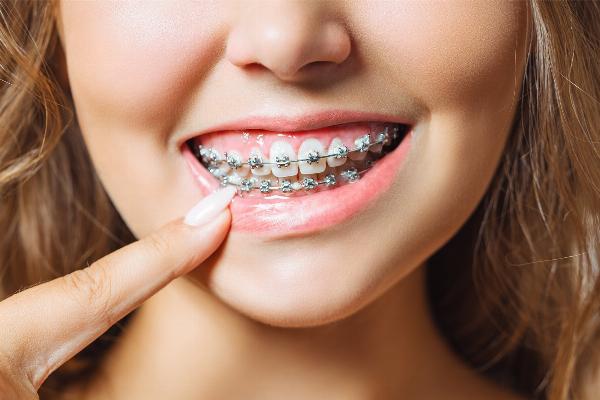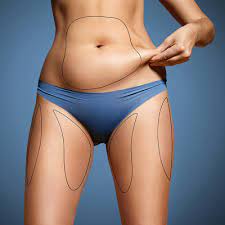 Competitor Backlink Hack – Steal Their Traffic. Legally!
Competitor Backlink Hack – Steal Their Traffic. Legally!
Types of Dental Braces Available in Dubai: A Comprehensive Comparison
Written by anaya george » Updated on: June 17th, 2025

Choosing the right type of dental braces is a significant decision that can greatly impact your oral health and smile. Dental Braces in Dubai, a variety of braces options are available, each offering unique benefits and considerations. Whether you're considering traditional braces, clear aligners, or other alternatives, understanding the differences can help you make an informed choice tailored to your needs.
Traditional Metal Braces
Description:
Traditional metal braces are made from high-grade stainless steel. They consist of metal brackets bonded to the front of each tooth, connected by archwires that guide the teeth into proper alignment.
Benefits:
Effective: Suitable for correcting even complex teeth misalignment issues.
Cost-Effective: Generally more affordable compared to other braces options.
Durability: Known for their robustness and ability to withstand treatment duration.
Considerations:
Visibility: The most noticeable type of braces due to metal brackets and wires.
Maintenance: Requires careful oral hygiene practices to prevent staining and plaque buildup.
Comfort: Initial discomfort and adjustments may be needed as teeth move into position.
Ceramic Braces:
Description:
Ceramic braces are similar to traditional metal braces but use tooth-colored or clear ceramic brackets and wires, blending in more naturally with teeth.
Benefits:
Aesthetics: Less noticeable than metal braces, especially from a distance or in photographs.
Effectiveness: Capable of handling moderate to severe misalignment cases.
Comfort: Generally smoother and less irritating to gums than metal braces.
Considerations:
Cost: Slightly more expensive than metal braces due to the ceramic material.
Staining: Brackets may discolor if not properly maintained or with certain foods and drinks.
Fragility: Ceramic material can be more prone to breakage than metal.
Lingual Braces:
Description:
Lingual braces are similar to traditional braces but placed on the inside (lingual side) of teeth, making them virtually invisible from the outside.
Benefits:
Invisibility: Hidden from view, ideal for those concerned about aesthetics.
Effectiveness: Capable of treating most alignment issues, similar to traditional braces.
Customization: Tailored to fit the individual contours of your teeth.
Considerations:
Speech Adjustments: Initial speech adjustments may be required due to brackets' placement.
Maintenance: Challenging to clean and adjust compared to other types of braces.
Cost: Generally more expensive than traditional metal or ceramic braces.
Clear Aligners (e.g., Invisalign):
Description:
Clear aligners are custom-made, removable plastic trays that gradually move teeth into position without the need for brackets or wires.
Benefits:
Invisibility: Virtually invisible, offering a discreet treatment option.
Removability: Can be taken out for eating, drinking, brushing, and special occasions.
Comfort: Smooth plastic trays minimize irritation to gums and cheeks.
Considerations:
Compliance: Requires strict adherence to wearing schedule (22 hours/day) for optimal results.
Effectiveness: Best suited for mild to moderate alignment issues, not suitable for complex cases.
Cost: Generally more expensive than traditional braces, depending on treatment length.
FAQs About Dental Braces in Dubai:
Q1: Are braces painful?
A1: Initially, braces may cause discomfort as teeth begin to shift. Over-the-counter pain relievers and orthodontic wax can help manage this discomfort.
Q2: How long does treatment typically last?
A2: Treatment duration varies depending on the complexity of your case and the type of braces chosen. On average, treatments can range from 18 months to 3 years.
Q3: Can adults get braces?
A3: Yes, adults can benefit from braces to correct alignment issues and improve their smile. Many orthodontic options are suitable for adults.
Q4: How much do braces cost in Dubai?
A4: Costs vary based on the type of braces and the complexity of treatment required. It's best to consult with your orthodontist for an accurate estimate.
Q5: Are there any dietary restrictions with braces?
A5: Yes, certain foods should be avoided to prevent damage to braces and teeth. Hard, sticky, and sugary foods are generally discouraged.
Q6: How often do I need to visit the orthodontist during treatment?
A6: Typically, orthodontic visits are scheduled every 4-6 weeks for adjustments and progress checks. These visits are essential for ensuring treatment is progressing as planned.
Conclusion:
Choosing the right type of dental braces in Dubai involves considering factors such as treatment goals, aesthetics, comfort, and budget. Whether you opt for traditional metal braces, ceramic braces, lingual braces, or clear aligners like Invisalign, consulting with an experienced orthodontist is crucial. They can assess your dental needs, discuss treatment options, and guide you towards achieving a straighter, healthier smile.
Note: IndiBlogHub features both user-submitted and editorial content. We do not verify third-party contributions. Read our Disclaimer and Privacy Policyfor details.
Copyright © 2019-2025 IndiBlogHub.com. All rights reserved. Hosted on DigitalOcean for fast, reliable performance.












